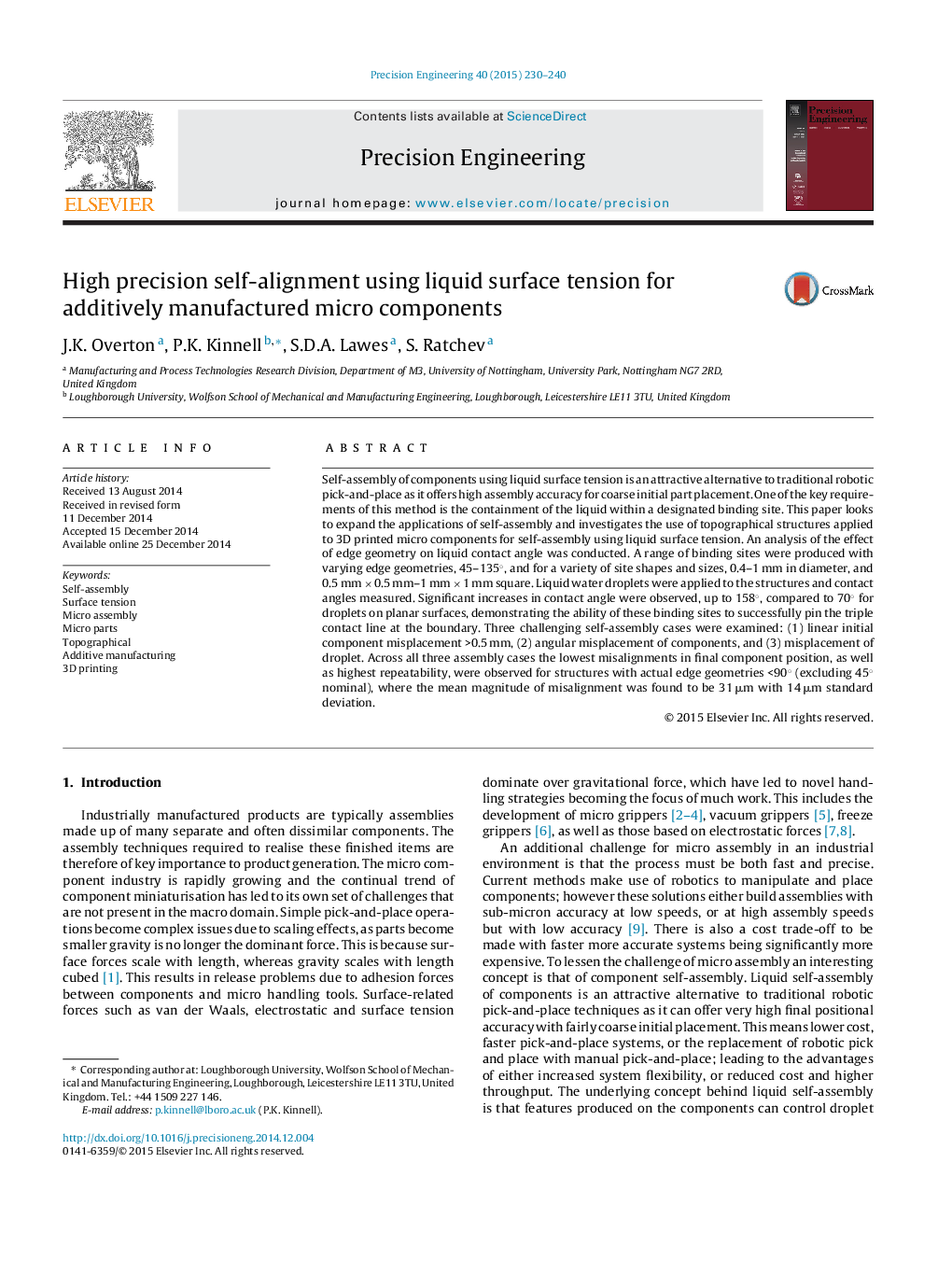| Article ID | Journal | Published Year | Pages | File Type |
|---|---|---|---|---|
| 801321 | Precision Engineering | 2015 | 11 Pages |
•Undercut surface feature increase droplet contact angles by 80°, aid self-assembly.•Additive-manufactured features, 0.4–2 mm scale, align at large misplacements, ≤0.5 mm.•Lowest misalignment and highest repeatability for 60–75° undercut structures.•Mean misalignment magnitude of 32 μm for 60° and 29 μm for 75° undercut structures.•Accurate and repeatable assembly by hand with no special placement devices.
Self-assembly of components using liquid surface tension is an attractive alternative to traditional robotic pick-and-place as it offers high assembly accuracy for coarse initial part placement. One of the key requirements of this method is the containment of the liquid within a designated binding site. This paper looks to expand the applications of self-assembly and investigates the use of topographical structures applied to 3D printed micro components for self-assembly using liquid surface tension. An analysis of the effect of edge geometry on liquid contact angle was conducted. A range of binding sites were produced with varying edge geometries, 45–135°, and for a variety of site shapes and sizes, 0.4–1 mm in diameter, and 0.5 mm × 0.5 mm–1 mm × 1 mm square. Liquid water droplets were applied to the structures and contact angles measured. Significant increases in contact angle were observed, up to 158°, compared to 70° for droplets on planar surfaces, demonstrating the ability of these binding sites to successfully pin the triple contact line at the boundary. Three challenging self-assembly cases were examined: (1) linear initial component misplacement >0.5 mm, (2) angular misplacement of components, and (3) misplacement of droplet. Across all three assembly cases the lowest misalignments in final component position, as well as highest repeatability, were observed for structures with actual edge geometries <90° (excluding 45° nominal), where the mean magnitude of misalignment was found to be 31 μm with 14 μm standard deviation.
